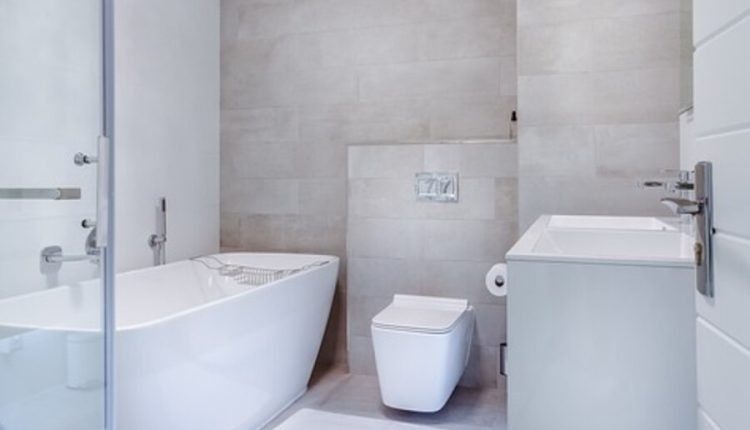Get everything you might need ready ahead of time.
a) A brand-new faucet must be suitable for the fixture to which it will be affixed. For instance, a center set or broad faucet necessitates drilling three holes into the sink or countertop at the appropriate distance apart and with the appropriate diameter.
b) Supply lines—both braided and rigid varieties are available. Braided is the better option for first-time plumbers because it is less complicated to set up. It is suggested that braided supply lines be replaced at the time of faucet replacement.
c) Wrenches that can be adjusted or small channel locks
d) A basin wrench; you probably won’t always need one, but they’re handy.
Water-collecting containers, such as a bucket or a large bowel
Towel or sponge for mopping up accidents
g) Plumber’s putty or silicone caulk; use the gasket from your faucet’s installation. Read the included manual to find out if your new sink requires this. To avoid permanent discoloration, avoid using plumbers’ putty on countertops made of composite materials like marble.
h) A putty knife for scraping the area under the sink where the old faucet used to be
i) You might need some plumber’s tape (Teflon tape).
A Phillips-head screwdriver may be required if your faucet isn’t assembled.
First, clear away the space behind your sink. Clear the area so you may lie on your back and reach the faucet’s base without worrying about damaging your belongings.
Second, use a flashlight to ensure plenty of light under the sink.
Third, turn off the sink’s water supply. The hot and cold water supply shutoff valves should be under the sink unless you want to risk turning off the city’s water supply to secure and rotate counterclockwise.
Fourth, if your faucet has two handles, use them to release pressure and ensure the water supply is off.
Fifth, if you aren’t changing the supply lines: Turn the nuts counterclockwise to release the supply lines attaching the underside of the faucet as you lay underneath the sink with your bucket or bowl right under the faucet. Get a container ready for the stream of water that will soon be coming from the sink. You can place the curved end in the container if your supply lines are bendable.
Loosen the nuts connecting the supply lines to the shut-off valves by rotating them counterclockwise while lying beneath the sink with your bucket or bowl under the shut-off valves. You must be prepared to receive the water flowing from the supply line. The nut that secures the faucet’s supply line must also be removed.
Step 6: Turn the large mounting nuts counterclockwise to loosen and remove the faucet from the sink/countertop. You might possibly remove them with your fingers, but a basin wrench would make the job much more straightforward.
Seventh, remove the existing faucet and clean the space beneath it. Old plumber’s putty or caulk and hard water deposits may require removal with a putty knife and cleaner. Before continuing, make sure the area is dry and free of debris.
Step 8: A little bead of the plumber’s putty or silicone caulk should be laid on the underside of the gasket included with your new faucet. If your new faucet comes with a rubber or plastic gasket, you may not need either.
The ninth step is to put the new faucet together, including the gasket, handles, and hoses. It is possible that you can connect the supply lines to the faucet’s base at this point. Before you begin, check that the vast mounting bolts will fit over the supply line’s terminals.
Place the faucet in the hole(s) and slowly tighten the massive mounting bolts. While tightening the bolts, ensure sure the faucet stays straight and centered. If you’ve sealed the underside of your faucet with caulk or putty, you should tighten the mounting bolts carefully, spreading the force evenly around the base of the faucet. Be careful not to overtighten them since this could lead to cracking.
Tape the threads on the faucet and the pipes clockwise with the plumber’s tape (Teflon tape). After loosening the nuts using your fingers, tighten them with a wrench to reconnect the supply lines. If you tighten something too much, it could crack and start leaking.
Step 12: If you used it, you may have leftover plumber’s putty around your faucet. A damp sponge will do the trick.
Step 13: Restart the water service by rotating the valves clockwise to open them.
Turn on the water and let the faucet flow for 15 seconds to complete Step 14. Look for leaks around the fasteners and underneath the sink. You can now tighten the bolts even further if necessary.
If your faucet has a lift rod, attach it to the drain following the manufacturer’s directions.
Bathroom sink faucets come in a dizzying array of styles. In some cases, the search may take a very long time. The most challenging part can be locating a desirable faucet at an affordable price. Find one-of-a-kind styles at affordable costs with Unique Bathroom Faucets.
Read also: Precisely What is Radiation and Is It Unsafe?


